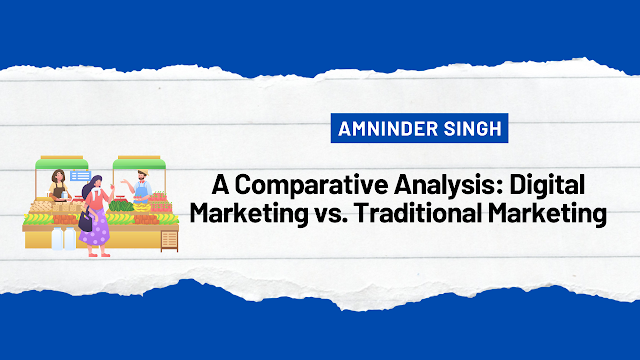In today’s fast-paced digital age, businesses are constantly seeking innovative ways to connect with their target audiences. Marketing, the cornerstone of any successful business, has evolved significantly over the years.
Traditional marketing methods, which have been in use for decades, now coexist with digital marketing strategies that have taken the world by storm.
This article will provide a comprehensive comparative analysis of digital marketing and traditional marketing, exploring their respective strengths, weaknesses, and the factors that influence their effectiveness.
Traditional Marketing
Traditional marketing refers to conventional advertising methods that have been around long before the digital era.
This includes print media (newspapers, magazines, brochures), television commercials, radio ads, billboards, and direct mail marketing.
While traditional marketing has been a reliable tool for decades, it does come with certain limitations.
Strengths of Traditional Marketing:
Tangibility: Physical advertisements, such as brochures and flyers, provide a tangible presence that can leave a lasting impression on the audience.
Local Reach: Traditional marketing methods can be tailored to target local audiences effectively, making them ideal for brick-and-mortar businesses.
Familiarity: Many consumers are accustomed to traditional marketing, making it a comfortable and trusted medium.
Weaknesses of Traditional Marketing
Limited Analytics: Tracking the performance of traditional marketing campaigns is challenging, making it difficult to measure ROI accurately.
High Costs: Producing and distributing traditional marketing materials can be expensive, especially for businesses with limited budgets.
Limited Interactivity: Traditional marketing is a one-way communication channel, lacking the interactive elements that modern consumers crave.
Digital Marketing
Digital marketing leverages the power of the internet and technology to reach a broader audience through various online channels. This includes search engine optimization (SEO), social media marketing, content marketing, email marketing, pay-per-click (PPC) advertising, and more. Digital marketing offers numerous advantages, but it also has its own set of challenges.
Strengths of Digital Marketing
Targeted Marketing: Digital marketing allows businesses to precisely target their desired audience based on demographics, behavior, and interests.
Measurable Results: Detailed analytics tools enable marketers to track the performance of campaigns in real-time, making it easier to adjust strategies for optimal results.
Cost-Efficiency: Compared to traditional marketing, digital marketing often offers a more cost-effective way to reach a larger audience.
Global Reach: Digital marketing breaks geographical barriers, allowing businesses to connect with a worldwide audience.
Weaknesses of Digital Marketing
Information Overload: The digital landscape is saturated with content, making it challenging for businesses to stand out and capture audience attention.
Constant Changes: The digital marketing landscape evolves rapidly, requiring marketers to stay updated on the latest trends and algorithms.
Privacy Concerns: Increasing awareness of data privacy has led to stricter regulations and limitations on digital marketing practices.
Factors Influencing Effectiveness
Several factors influence the effectiveness of both digital and traditional marketing:
Target Audience: Understanding your audience’s preferences and behavior is crucial. Some audiences may respond better to traditional methods, while others engage more with digital content.
Industry and Business Type: The nature of your industry and business goals play a significant role. B2B companies might find success in digital marketing, while local retail stores may rely on traditional methods.
Budget: Budget constraints can dictate the choice between digital and traditional marketing, as the latter is often more expensive.
Integration: Combining both digital and traditional marketing can be a powerful strategy, as they can complement each other to create a holistic marketing approach.
A comparative analysis : Digital Marketing vs. Tradtional Marketing : Conclusion
In the digital age, the choice between digital marketing and traditional marketing is not about one being superior to the other.
Instead, it’s about finding the right balance and leveraging the strengths of each method to meet your business goals effectively.
To succeed in today’s competitive landscape, businesses must adapt their marketing strategies to suit their target audience, industry, and available resources.
By embracing the strengths of both digital and traditional marketing, businesses can create a comprehensive marketing plan that maximizes their reach and impact.
This Article is Part of Our Digital Marketing Introductory Series
- Introduction to Digital Marketing
- History of Digital Marketing
- Significance, Strategies and Channels of Digital Marketing
- Digital Marketing vs Traditional Marketing
- Current Trends in Digital Marketing

